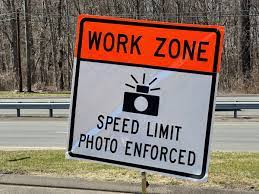
Everyone knows that the “speeding problem” on local roads has gotten worse in recent years. Add to that “distracted driving” (using one’s phone, texting, checking social media, etc. while behind the wheel), intoxicated drivers (from alcohol, cannabis, etc.) and pedestrians who are also distracted or intoxicated. Finally, the height and weight of vehicles has increased over the years, raising the rate at which crashes result in serious injuries and fatalities. All of this means that our streets and highways have become more dangerous. There is widespread outrage among the public at the lack of speed limit enforcement.
The State of Connecticut’s Vision Zero program aims to reduce and eliminate deaths and serious injury to pedestrians and bicyclists. One of the program’s approaches is to enforce speed limits and red-light violations by using cameras. Violations are recorded and the owner of the vehicle is issued a warning (for the first violation) or a ticket.
The fine would be like a parking ticket — a notice of financial liability to the owner of the vehicle, not the driver. Also, it should be noted that this is not a way for towns to generate revenue, since implementation of such a program is a net loss. (Expenses exceed revenue.)
Most people who oppose traffic cameras say they oppose surveillance of the public and loss of privacy. That is not a surprising response, but the fact is that our streets are already full of true surveillance and security cameras, and everyone who carries a cell phone is already being tracked wherever they go. It’s hard to see how traffic cameras would add to that.
This use of traffic cameras is just starting via pilot programs conducted by CT Department of Transportation and its Office of Traffic Administration.
State law allows the use of cameras by municipalities but restricts the use of this technology for traffic enforcement and only at locations with specific conditions. Examples include school zones, high crash zones, and “pedestrian safety zones”— a qualified area designated by a community through an approved process. The law also prohibits disproportionate use of such cameras in low-income areas.
Take the survey to let us know how you feel about the use of speed and red light enforcement cameras in Middletown and Portland.













